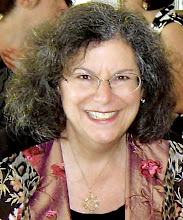“You know, you do way too much of that,” Frank Sessa rebuked me, while we were chatting one day after he entered Hospice.
“Huh?” I asked, suddenly worried about what I might have done to provoke such a remark from my friend.
“Worry! You said you were worried. How does that help? Now cut that out!” he said in his crisp, authoritative way.
Sure enough, I’d been rattling on about some assignment I was working on and had mentioned a detail I’d been worrying about.
This friend never minced words. His comments were typically bold and incisive. So that particular piece of advice is among the most comforting memories I’ll always cherish.
Frank Sessa, 63, of Wyncote, chemist with multiple patents, tutor, guitarist, and 4th Dan karate instructor, passed away on Saturday, December 18, at Keystone House Hospice after a gritty fight with carcinoid tumor disease of the liver.
“A technicality,” he might have said, while acknowledging that it was a pretty significant one. The scientist with a wry sense of humor, Sessa was employed as an applications specialist with FMC Corporation in Center City at the time of his death.
Frank Sessa was no shrinking violet. His principles were crucial to him, and if pressed, diplomacy less so.
Once in the 1980s, when walking with his wife through London’s Piccadilly Circus, Sessa noticed a gang of kids surrounding a few teen tourists from Germany. Things weren’t right, he sensed, and then realized he was observing a robbery. Recounting the episode, he told me he took off running after the thugs, “thinking ‘I hope someone else gets there first ‘cause that guy has a knife.’” Sessa did get there first, interrupting – but too late to prevent - the crime and calling attention to the need for help. “I was pissed off,” he said later about his split-second response to help strangers in need in a foreign land.
Born August 3, 1947 in Stamford, Connecticut, Sessa grew up in Bridgeport with his twin brother, Lewis, and older sisters Cathy (Hunyadi) and Cynthia (Pound). The non-shrinking violet began to bloom during his years at Trumbull High School, while working part-time at Terrace Pharmacy.
The teen loved sports, playing on whatever teams he could. Although he’d landed a spot on the school football team when he was a freshman, he was cut the next year. Devastated but determined, he tried out again his junior year, and was again disappointed.
“Perseverance,” Sessa later taught his chemistry tutees and students at Glenside Shotokan Karate Club. He tried again senior year and made the team. “After two games, I was the starter. I was both offense and defense. I was not going to be denied. I was like a crazy man,” he said.
By the time he reached Southern Connecticut State University, he was focused. Because he got A’s in his classes, he was offered jobs as biology and chemistry lab assistant. He received his B.S., graduating with department honors in chemistry, after completing the honors program in 1970. His Masters of Science in materials science (1973) followed from a fellowship program from the University of Connecticut.
He met Mary Lou at a dance when she was a freshman in college. They clicked, and after dating for four years, married in the same Connecticut church – Assumption Church Fairfield - which he later selected for his funeral Mass.
In sentimental moments, he called her a “jewel” and said, “I’d never want anyone else.”
He said that watching his daughter, Stephanie, grow into a young lady “has been a delight.” It was when Steph was a young girl that she rekindled her father’s love of music. He’d taken classical guitar lessons in college, and eventually linked up with fathers of her friends.
Mary Lou, a vocalist in bands during her own youth, joined the mature group, Mid-Life Crisis, which performed pro bono for neighborhood gatherings and nonprofit organizations in the region.
Sessa credited his brother for introducing him to karate. He was instrumental in bringing to scale the fledgling karate club at the University of Connecticut. Perhaps his favorite aspects of karate were the tenets it teaches about life. He liked the adage about getting knocked down seven times and getting up eight times. “Karate is about you. You conquering you,” he said.
Those were pieces of the philosophy that also guided his coaching of girls’ softball for six years – along with friends and neighbors Mary Ann Goss and Peg O’Rourke - for the Glenside Athletic Association.
Sessa came to Philadelphia in 1977 as a research scientist with Betz Laboratories, which is where he was involved with the work that earned the patents in corrosion and deposit control. He also worked for a number of years at Stonhard, Inc. prior to arriving at FMC.
Friends remember the many times Sessa would come to their aid – whether on house projects or in times of personal grief.
Our family recalls some years ago when he traveled down to Virginia for a weekend to guide my husband through re-flooring a room in our daughter’s home. There were countless additional examples.
With other friends, he shared their heartaches as his own.
Frank Sessa was very there for his family and friends. Fortunately, his healthy voice will remain strong in our ears and his life will remain vibrant in our hearts and memories.
In lieu of flowers, contributions may be made to Fox Chase Cancer Center (333 Cottman Ave., Philadelphia, PA 19111) or to Friends of Frank & Family (c/o 114 E. Waverly Rd., Wyncote, PA 19095).






